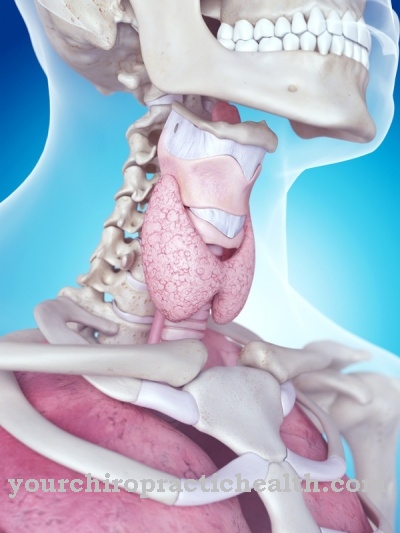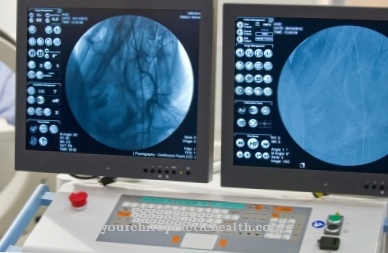The Neuroscience deals with the structure, function and disorders of nerves. These are considered from a medical, biological and psychological point of view. In addition to the individual elements, the focus is on complex nervous systems and the cooperation of structures as well as complaints resulting from diseases.
What are the neurosciences?

In the scientific spectrum, experts deal with the structure and function of nerves in all situations. On the one hand, the individual system components and neurons are considered; on the other hand, neuroscience provides a macrological overview. Glial cells are usually of particular interest. In general, however, neuroscientists want to analyze the networking of nerves and their function.
For example, it is about examining the central nervous system in vertebrates. They also take care of diseases that fall into the field of neurology. The neurosciences differentiate themselves in different directions. One of them is, for example, brain research, which examines the structure and performance of the brain in humans and monkeys. On the one hand, basic research is carried out, on the other hand, it is about determining the causes of certain diseases such as Alzheimer's and epilepsy.
Neuroscience deals with various complaints of the nervous system and strives not only to diagnose diseases but also to cure them. Another important sub-point is the perception of information from the environment, for example in the form of sensory impressions and the emergence of emotional reactions.
Treatments & therapies
Neuroscience is therefore used in diseases that affect the nervous system. These are, for example, Alzheimer's. Alzheimer's is one of the degenerative diseases that arise in the further course of life due to the wear and tear of physical structures. In addition, Alzheimer's can be included in the category of dementias. Those affected suffer from memory loss and changes in their individual personality.
The exact development of Alzheimer's has not yet been fully researched and is therefore the focus of neuroscientific experiments. However, computed tomography reveals a deposition of specific proteins. These can often be found years before the onset of the first symptoms in the person's brain. Presumably the proteins impede communication between the nerve cells, which is what causes the typical Alzheimer's symptoms. Here, neuroscience is interested in further research into causes and treatment. Another neuroscientific disorder is epilepsy. In addition to hereditary components and metabolic disorders, the attacks are caused, among other things, by brain damage.
Neuroscience is particularly useful in such a case. Ultimately, the symptoms result from a disturbance in the nerve cells, which leads to a pathological discharge.Which symptoms are noticeable and which are intense depends, for example, on the exact location of the discharge and whether it occurs on one half of the brain or on both sides. Another important area of neuroscience is brain tumors and head injuries. The tumor can be benign or malignant and lead to various symptoms, such as headache, vomiting and a change in personality.
Most people experience headaches as excruciating. The symptoms most often occur in the context of migraines. This in turn is in the interests of neuroscience. As the disease progresses, neurological symptoms, such as a change in vision, can become noticeable in addition to headaches.
You can find your medication here
➔ Medicines to calm down and strengthen nervesDiagnosis & examination methods
Neuroscience uses different methods to find out the cause of a disease or to treat specific complaints. Research is differentiated into non-invasive and invasive procedures. Non-invasive methods are measures in which the research framework does not harm the patient. Invasive research is practiced almost exclusively through studies of patients who are naturally ill. In the context of psychophysics, the basic capabilities of a nervous system should be assessed.
In anatomical diseases, the brain of a sick person is often compared to a healthy brain. Such a comparison enables the scientists to draw conclusions about their function based on the damaged areas. Such an examination takes place in a lesion study. However, this can only be completed when the patient has died and the damage can be precisely localized. Due to technical progress, such a lesion study has lost its importance. Nowadays, for example, an EEG can be used to trace the work of the brain. The basis here is the measurement of electronic currents that result from the function of the nerve cells in the form of an electric field. In this way, knowledge about processing processes in the brain can be obtained.
A computed tomography enables the precise localization of any damage without the need to open the brain. Computed tomography in particular revolutionized neuroscience. Technological progress provides new knowledge because the devices make it possible to examine the brain immediately after a complaint or an accident occurs. Lesions can be made spatially visible, but information about nerve cells cannot be collected based on such an examination.
Transcranial magnetic stimulation is one of the few invasive procedures used in humans. Specific regions of the brain are temporarily disabled by electronic currents in order to investigate the sequence of neurological steps. So far, experts have not assumed any lasting damage to the patient. Otherwise there would be no legal basis for such a study on living humans.

























.jpg)

.jpg)
